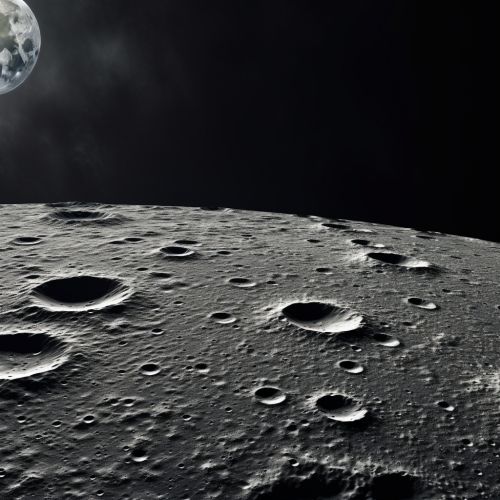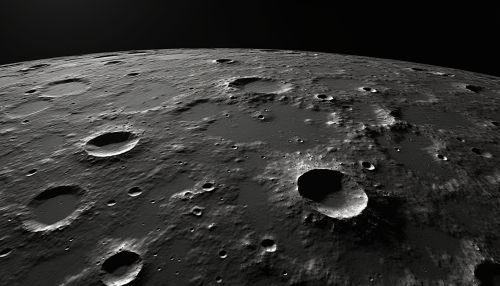Lunar mining
Introduction
Lunar mining refers to the extraction of minerals and other significant geological materials found on the moon. The concept of lunar mining has been explored extensively in the past few decades due to the potential benefits it could bring to Earth, such as providing a new source of rare minerals and metals, and potentially aiding in the advancement of space exploration.


History of Lunar Mining
The idea of lunar mining originated during the space race between the United States and the Soviet Union. The potential for lunar mining became more apparent after the Apollo missions brought back lunar samples to Earth, which were found to contain a variety of valuable minerals and elements.
Lunar Resources
The moon is known to contain a wide range of valuable resources. These include, but are not limited to, helium-3, a potential fuel for nuclear fusion; rare-earth elements, which are crucial for many modern technologies; and water, which could be used for life support and rocket fuel.
Helium-3
Helium-3 is a light, non-radioactive isotope of helium with two protons and one neutron. It is not naturally abundant on Earth, but it is thought to be abundant on the moon, deposited by solar wind over billions of years. Helium-3 could potentially be used as a fuel in future nuclear fusion power plants.
Rare-Earth Elements
Rare-earth elements are a set of seventeen chemical elements in the periodic table, specifically the fifteen lanthanides plus scandium and yttrium. They are critical in the manufacture of a wide variety of high-tech products, including computers, cell phones, renewable energy systems, advanced transportation, health care, environmental mitigation, national defense, and many others.
Water
The presence of water on the moon is significant for lunar habitation and mining. Water can be split into hydrogen and oxygen, which could be used for rocket fuel. It could also be used for life support systems, providing drinking water and oxygen for astronauts.
Lunar Mining Techniques
Several potential techniques for lunar mining have been proposed, including strip mining, pit mining, and in-situ resource utilization (ISRU).
Strip Mining
Strip mining involves removing the lunar surface layer by layer. This method would likely be used for mining helium-3.
Pit Mining
Pit mining involves digging a large hole, or pit, into the lunar surface to reach valuable resources. This method could be used to access deeper lunar resources.
In-Situ Resource Utilization
ISRU involves using the resources found on the moon to create products on-site, reducing the amount of materials that need to be brought from Earth. For example, lunar regolith could be used to create construction materials, and lunar water could be used to create rocket fuel.
Challenges and Controversies
There are numerous challenges and controversies associated with lunar mining. These include technical challenges, such as the harsh lunar environment and the current lack of mining infrastructure; legal and ethical issues, such as the question of who owns the moon's resources; and potential environmental impacts, both on the moon and on Earth.
Future Prospects
Despite the challenges, many believe that lunar mining could play a crucial role in the future of space exploration and Earth's resource needs. With advancements in technology and potentially favorable changes in legal and policy frameworks, lunar mining could become a reality in the not-too-distant future.
